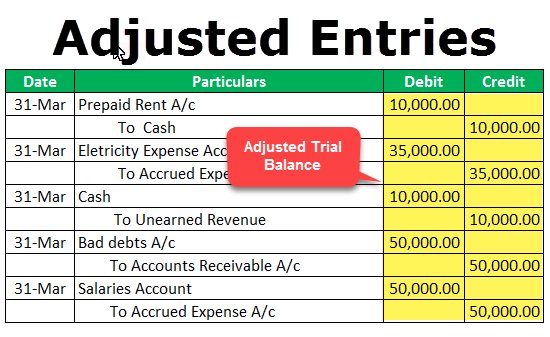
This information can help companies budget for future production runs and make informed financial decisions. Sage is particularly good at automating financial administration, and with multiple pricing tiers and structures, you’re sure to find a level that works for your specific business needs. The software handles everything from procurement to sales, as well as inventory, financials, and even scheduling. And as your business gets bigger, you can upgrade to Sage Intacct for expanded business software.
What to look for in manufacturing accounting software
To gain a deeper understanding of manufacturing costs and make informed decisions, the software should incorporate data analytics capabilities. This allows you to analyze data and derive insights into the overall financial position of your business https://www.quick-bookkeeping.net/ processes. With numerous options available, selecting the right manufacturing accounting software package can be a daunting task. Moreover, the cost of such software can be substantial, making it crucial to make an informed investment decision.
Connect Xero accounting software to manufacturing apps
Methods such as LIFO and FIFO not only affect financial reporting but also have tax implications, influencing the amount of taxable income and, consequently, the tax liability. At its most basic level, the cost of goods sold is simply beginning inventory, plus purchases, minus ending inventory. Thus, the derivation of the cost of goods sold is really driven by the accuracy of the inventory valuation procedures that were just described. In addition, any abnormal costs incurred, such as excessive scrap, are not recorded in inventory, but instead are charged directly to the cost of goods sold.
What you should look for in your manufacturing accounting software
Cloud-based software offers apps for mobile devices, which makes it easy to use for multiple team members. Most small business owners haven’t studied accounting, and the software should help you do basic bookkeeping and accounting easily without too much of a learning curve. Ideally, you’ll be able to make customized dashboards to help you get a fast overview of your finances when you need to. You should consult your own professional advisors for advice directly relating to your business or before taking action in relation to any of the content provided. Retailers sell stock and service companies sell their time, but only manufacturers create new products from scratch. This accounting method tracks individual items of inventory, which is useful if you can identify each item with, for example, a serial number or radio-frequency identity (RFID) tag.
Overhead Cost Assignment
By aligning these projections with strategic objectives, companies can ensure that they are well-prepared to meet market demands and operational challenges. Your cost of goods manufactured includes all direct and indirect costs that go into the products you finish producing during an accounting period. Like the cost of goods sold, it generally refers to direct materials, direct labor, and manufacturing overhead. The direct costing method in manufacturing accounting allows businesses to only consider variable costs without becoming encumbered with fixed expenses. Direct costing is primarily useful in undertaking pricing decisions for the short term.
- Variable costs in manufacturing go up as production increases and down as production decreases.
- Please do not copy, reproduce, modify, distribute or disburse without express consent from Sage.These articles and related content is provided as a general guidance for informational purposes only.
- Please do not copy, reproduce, modify, distribute or disburse without express consent from Sage.This article and related content is provided as a general guidance for informational purposes only.
- It involves calculating the weighted average cost of all units available for sale during a given period.
- Then, the average cost is assigned to the COGS (Cost of Goods Sold) and ending inventory.
- By adopting lean accounting principles, manufacturers can create a more agile and responsive financial management system that supports continuous improvement and sustainable growth.
It is especially useful for businesses that experience frequent changes in inventory costs, as it mitigates the impact of price volatility on financial statements. Activity-based costing (ABC) is a more sophisticated approach that allocates overhead costs based on the activities driving those costs. This method provides a more accurate picture of product costs by identifying the specific activities that consume resources.
Direct costs are traceable to a product, like the wood to manufacture toothpicks and the direct labor to cut the wood . Indirect costs are those costs required to run a manufacturing business but are not directly traceable to a product. Think of safety glasses, a facility’s security guard, and depreciation and utilities. https://www.quick-bookkeeping.net/1-15-closing-entries-financial-and-managerial/ Manufacturing businesses must adhere to stringent financial reporting requirements to ensure transparency and compliance with regulatory standards. These requirements vary by jurisdiction but generally include the preparation and submission of financial statements, tax returns, and other regulatory filings.

To end this article, let us take a look at some manufacturing accounting best practices that should be on top of the to-do list. Another prevalent method is process costing, which is suitable for manufacturers engaged in continuous production of homogeneous products, such as chemicals or food items. Unlike job order costing, process costing accumulates costs for each production process or department over a specific period. This method simplifies cost allocation by averaging the total costs over all units produced, making it easier to determine the cost per unit. Process costing is particularly useful for identifying inefficiencies in production processes and implementing cost-saving measures.
It integrates with third-party manufacturing software to give you an overall view of your full business process. Invoicing, financial reporting, and intuitive dashboards are all part of Xero’s benefits, and you can track stock and inventory, too. This method considers numerous future costs that might impact the final cost of producing the product. The process essentially involves estimating these costs and ensuring that the company remains profitable. This method allows businesses to undertake a proactive approach so that they make a decent margin even if the market witnesses volatility.
Advanced manufacturing accounting software is a must-have for modern manufacturers and the manufacturing accounting teams responsible for tracking business financials. Manufacturers demand powerful, intuitive financial reporting with customizable dashboards to monitor costs, profitability, cash flow, and financial health in real-time. Rootstock Financials is an ideal solution for manufacturing accounting, and so much more. The value of inventories plays a large role in a company’s finances and profitability, as it directly affects both COGM, COGS, and tax liability.

These documents are important when the manufacturing business needs to showcase its credibility and financial performance to investors or funding partners when raising capital. This form of accounting is also useful when the company undergoes regulatory checks and inspections. Financial accounting allows businesses to assess overall monetary health and manage finances in the business, making it a crucial aspect of manufacturing bookkeeping processes. Accounting systems are financial forecasting vs financial modeling more complex for manufacturing companies because they need a system that tracks manufacturing costs throughout the production process to the point at which goods are sold. Since income statements for manufacturing companies tend to be more complex than for service or merchandising companies, we devote this section to income statements for manufacturing companies. Understanding income statements in a manufacturing setting begins with the inventory cost flow equation.
He has been an auditor of international companies and a tax strategist for real estate investors. In manufacturing, fixed costs remain consistent no matter how many units you produce. For example, that might include rent for your factory or interest payments on a business loan. Deciphering jargon can be a frustrating challenge when you’re learning to navigate the complexities of manufacturing accounting. Here are brief explanations of some fundamental terms you’ll need to know to succeed.
Another significant challenge in the manufacturing field is the complex nature of the business. Your accounting experts need to communicate with other parts of your business effectively so they can explain their analysis and make suggestions. Besides the obvious benefits of financial planning and tax reports, financial analysis can also help you to see how well your company is running and identify areas for development. 54% of business leaders use business analysis for their decision-making; however, due to unprecedented data volume growth, it is increasingly difficult to keep up with this demand internally. At the same time, crediting the profit and loss account by the amount of manufacturing profit does not affect the net profit. The articles and research support materials available on this site are educational and are not intended to be investment or tax advice.
The following manufacturing cost terms are ever-present in accounting for manufacturing businesses. Understanding them allows you to make informed business decisions, accurately calculate your costs, price your products effectively, and improve efficiency. This article explains what manufacturing accounting is, the types of manufacturing costs that must be accounted for, and how to accurately value production costs using different methods and technologies. It is crucial when understanding raw materials, work-in-process, and finished goods. It will avoid a situation where you have too much inventory (which costs money) or, even worse, not enough inventory, where you cannot fulfill the requirements of your customers. The accounting process for manufacturing businesses can be much more complicated than in other industries due to the complexity of their operations and longer-than-average timelines.
If cash flow is a potential concern, addressing this constraint might involve securing manufacturing business funding beforehand to ensure it does not impede the overall production process in the facility. Identifying the margin of profit you earn on the products your business creates and sells is an important part of manufacturing accounting. Margin analysis often involves tracking and accounting for all the costs involved in the production and then subtracting those costs from the total value those steps generate. Real-time costing for components and finished goods can provide more accurate insights for manufacturers.



